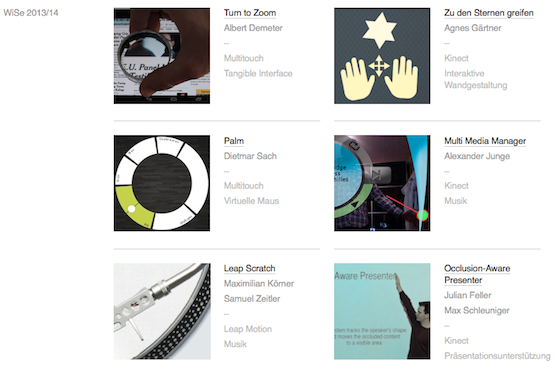A current direction in human-computer interaction is concerned with bringing back physical elements like real buttons, cubes, bricks, rulers etc. to the world of UI’s. This has been coined “Tangible User Interfaces” (TUIs) by Ishii from MIT (Ishii, Ullmer 1997). The idea is to exploit the physical properties of the object because they suggest a certain operations (round objects invite you to rotate them, buttons invite pressing them) and there is a sensual experience (haptic feedback) involved that is sometimes painful amiss in current touch interfaces.
Here’s an example that is based on the original ideas of Ulmer and Ishii (metaDESK):
Augmented Urban Model from Katja Knecht on Vimeo.
So in TUIs you control digital information (e.g. a desktop) by manipulating physical objects. However, what about the other way round? I.e. if the digital information changes, how can the physical objects be changed? This brings up a whole new set of potentials but also of technical challenges (Ishii et al. 2012).
The latest incarnation of this idea is inFORM, again from Ishii’s Tangible Media research group at MIT (Follmer et al. 2013):
In the arts the idea of bringing digital back to physical is manifest in “kinetic sculptures”, i.e. sculptures that change over time. Here is one impressive example at Singapore airport:
“Kinetic Rain” Changi Airport Singapore from ART+COM on Vimeo.
Literature
Hiroshi Ishii and Brygg Ullmer (1997) Tangible bits: towards seamless interfaces between people, bits and atoms. In: Proceedings of the ACM SIGCHI Conference on Human factors in computing systems (CHI ’97). ACM, New York, NY, USA, 234-241.
Sean Follmer, Daniel Leithinger, Alex Olwal, Akimitsu Hogge, and Hiroshi Ishii (2013) inFORM: dynamic physical affordances and constraints through shape and object actuation. In Proceedings of the 26th annual ACM symposium on User interface software and technology (UIST ’13). ACM, New York, NY, USA, 417-426.
Hiroshi Ishii, Dávid Lakatos, Leonardo Bonanni, and Jean-Baptiste Labrune. (2012) Radical atoms: beyond tangible bits, toward transformable materials. interactions 19, 1 (January 2012), 38-51.
